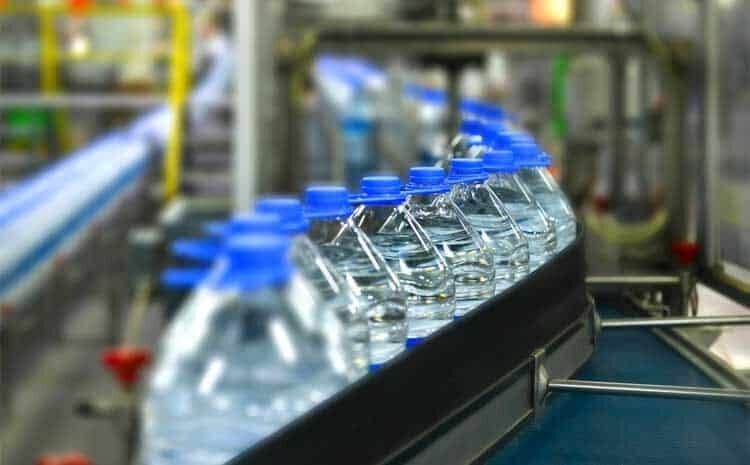
The Journey of a PET Bottle: From Raw Materials to Finished Product
PET bottles are everywhere in our daily lives—from water bottles, soft drink bottles, cooking oil, to food containers for condiments and other food items. While there are various types of plastics, for food and potable water containers, manufacturers prefer to use Polyethylene Terephthalate (PET) as it creates lightweight yet sturdy and durable bottles. The process of creating these bottles may vary slightly among manufacturers, but the basic approach is universal.
Raw Materials
PET is a plastic resin derived from petroleum hydrocarbons. The manufacturer creates long chains of plastic particles through polymerization and then blends the material with several chemical compounds. The manufacturer then reduces the material into tiny pellets and sends it to the bottle manufacturer. The bottling plant mixes the PET resin pellets with “regrind”—recycled plastic that has been reduced to flakes. As plastic loses some of its physical properties when repeatedly heated, manufacturers have to limit the amount of regrind they use, usually capping this component at 10% of the overall mix. Dyes are also introduced to the mix unless clear bottles are being created.
Creating a Preform
A PET bottle-making machine or a PET bottle manufacturing machine utilises an extruder to melt the PET and regrind mix at temperatures of about 260 degrees Celsius. The screw inside the extruder compresses the PET mix and injects the nearly molten material into molds, creating a bottle preform—sometimes referred to as a parison. The preform looks like a thick-walled test tube, often including the bottle’s characteristic screw top. The preform then cools as it travels to a PET bottle blow molding machine or automatic PET bottle blowing machine, and may need to be brought back up to the producer’s specified temperature for that operation. If necessary, the bottle manufacturer raises the temperature of the preform on a small stove.
Extending the Preform
The production of PET bottles starts with the preform, which is shaped in a two-part mold. The inside of this mold is shaped exactly like the finished container. A long needle rises through the preform, which is held in place with the screw end facing downward. The needle stretches the preform upward toward the top of the mold and, at the same time, blasts enough pressurised air into the preform to force it against the sides of the mold. This stretch blow molding process must happen quickly to maintain the bottle’s integrity and constant shape. With the help of advanced and automated PET bottle manufacturing machines, the process of stretch blow molding has become more efficient.
Air conditioning and also Trimming
The bottle then needs to be cooled quickly, otherwise, it will lose its shape when gravity causes it to droop downward in its flexible, heated state. Some manufacturers cool the bottle by circulating cold water or liquid nitrogen through the mold, while others fill it with a shot of air at room temperature. The mold usually produces a clean bottle, but some flashing might occur at the bottle joints, where both mold halves meet. If so, operators trim away the excess material and add it to the regrind.
PET has a high recycling rate compared to other plastics. In India, around 1.3 billion PET bottles are produced every day and according to the government, around 80 percent of these used containers are collected and recycled to make new PET bottles. With the rate of consumption growth in the country, the number of production of these containers is only going higher in the future.
What are PET Preforms?
Polyethylene Terephthalate (PET, PETE)/ Polyester, is frequently used for carbonated beverages, water bottles, and food packaging. It is an excellent material for packaging products due to its good alcohol and oil barrier properties, chemical resistance (excluding acetone and ketone), impact resistance, and tensile strength. The orienting process enhances its gas and moisture barrier properties, improving its overall strength. However, it is not heat-resistant and has a maximum temperature of 200 °F (93 °C). The PET (Polyethylene Terephthalate) material is shaped into a preform, which is then molded into a specific form. This preform is then blown into a container using a PET Bottle Blowing Machine, PET Bottle Blow Molding Machine, or Automatic PET Bottle Blowing Machine.
One of the key features of the PET preform is that it provides a clear and smooth surface, making it an attractive option for packaging products. The surface feels similar to glass, but the wall of the preform is strong and hard, appearing on the final bottle. Optimal design of the preform not only saves energy, but also provides good strength with low weight and reduces rejections. Thorough quality checks improve performance and reliability.
Product Features:
- Attractive Wall Density and Surface Finish.
- Reduced AA Levels as per International Standards.
- Precise Thread Finish for Better Closure Installation.
- No Split Lines on Preforms for Improved Container Finish.
- World-Class Quality Preforms.
- Scientifically Designed for High-Efficiency Levels. The preforms are manufactured for Packaged Drinking Water, Edible Oils, Juices, and other beverages.
The PET Bottle Manufacturing Machine, PET Bottle Making Machine, PET Bottle Blowing Machine, and PET Bottle Blow Molding Machine are used to produce the high-quality PET preforms that are used to manufacture PET bottles using the blow molding process.